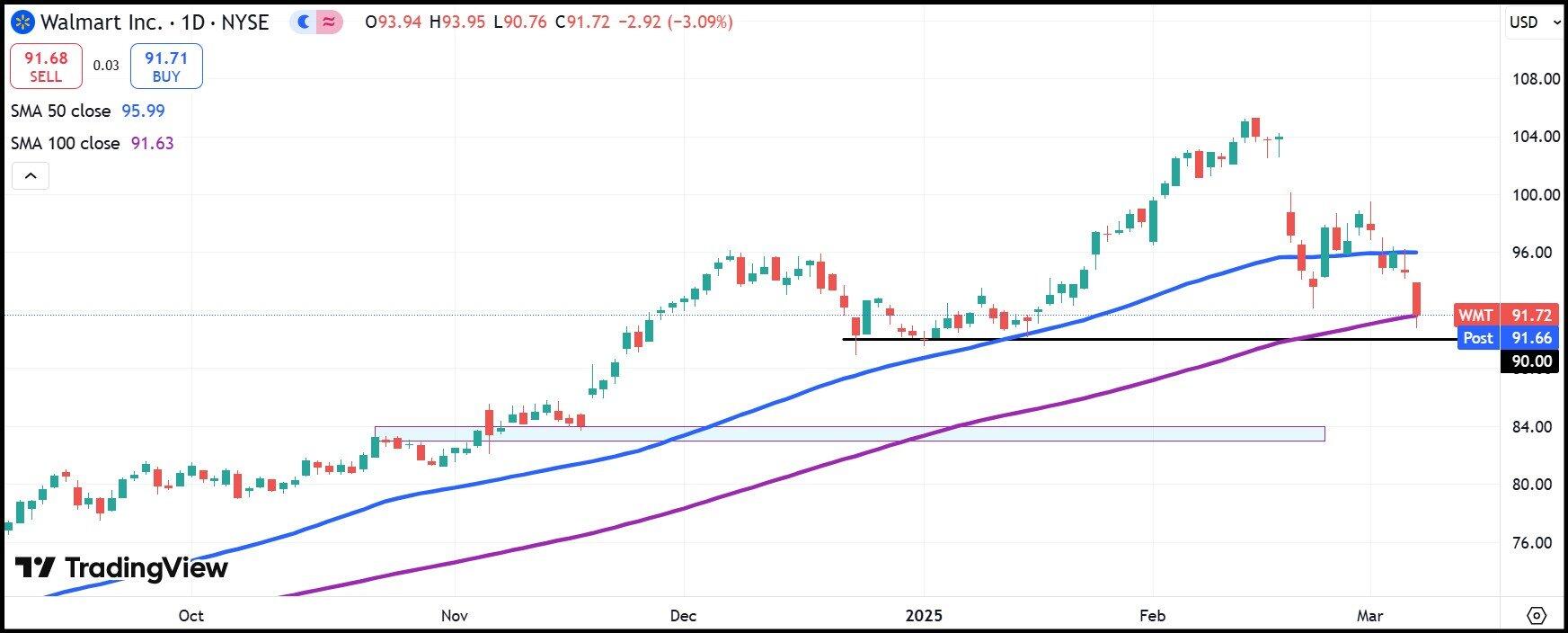- Walmart closes Friday’s session with a 3.1%drop.
- Executives are receiving resistance from Chinese suppliers when asking for discounts.
- Trump paused most tariffs on Canada and Mexico this week, but maintained those of China.
- The bad NFP figures show that the labor market could be at the beginning of a recession.
The US stock market ranged on Friday, going back in the morning session before advancing in the afternoon. The market continued its descending spiral with the publication of non -agricultural payroll (NFP) of the US for February, which resulted under forecasts, but then recovered after a Federal Reserve Governor (FED) seems to be at ease with the labor market data.
The three main US indices closed up on Friday, but were down for the week. In the case of S&P 500 and Nasdaq Composite, it was the third week of losses.
Although most of the names in the industrial average Dow Jones (DJIA) won in the session, Walmart (WMT) It was a remarkable outlier, since it had the worst performance among all the members of the index. WMT shares fell 3.1% on Friday, closing the session by $ 91.67.
News about Walmart’s actions
Walmart’s actions lost more than 7% this week and have been going down since they offered a warm guide three weeks ago.
A great uncertainty at this time are the tariffs of President Donald Trump. After starting with 25% tariffs on the imports of Canada and Mexico on Tuesday, Trump then paused them for a month in the automotive industry on Wednesday and then on Thursday extended that pause of one month to all the goods covered by its commercial agreement of the first mandate: the treaty between Mexico, the United States and Canada (T-MEC).
To put it simply, changes in Trump’s tariff policy are so frequent that they are possibly causing more anxiety than if they had simply left them in place. A country where it did not alter its policy this week was China, where a new 10% tariff was added to the 10% tax issued in February.
Walmart obtains a large part of its China products and has operations both in Canada and Mexico. This means that Trump’s fluctuating tariff policy could affect Walmart’s annual results rather than most companies.
Bloomberg reported Thursday that Walmart executives were having trouble transferring the Trump’s tariff to Chinese manufacturers. It was said that suppliers were strongly resisting any notion of reducing prices by 10% to share the load of Trump tariffs.
Walmart claims to obtain two thirds of its products within the US, so most of their offers should be immune. However, US suppliers who obtain supplies from abroad may need to increase prices too.
Although Canadian tariffs are largely paused until April 2, Walmart could face a negative reaction, since holders claim that Canadian customers are already informally boycotting US products and companies.
A disappointing fact in non -agricultural payrolls, an increase in unemployment is recorded
The February NFP were in 151K new jobs in the US economy, which did not reach 160K forecast, but were above the January figure. However, the January figure was reviewed from 143k to 125k. The unemployment rate also increased by a tenth of a percentage point to 4.1%.
Many investors actually appreciated the lowest number of jobs with the reasoning that it could allow Fed to cut interest rates soon. In a speech on Friday, the governor of the Fed, Adriana Kugler, described him as a “solid number” in the light of mass layoffs of federal employment of the Trump administration.
Kugler argued, however, that tariffs could decelerate economic growth and said they would pay special attention to inflation expectations and labor market.
In his own statements, the president of the Fed, Jerome Powell, said that Trump’s tariffs were increasing uncertainty, but said that the bank would not rush to cut interest rates.
WMT Shares Diario Graph
Source: Fx Street
I am Joshua Winder, a senior-level journalist and editor at World Stock Market. I specialize in covering news related to the stock market and economic trends. With more than 8 years of experience in this field, I have become an expert in financial reporting.








